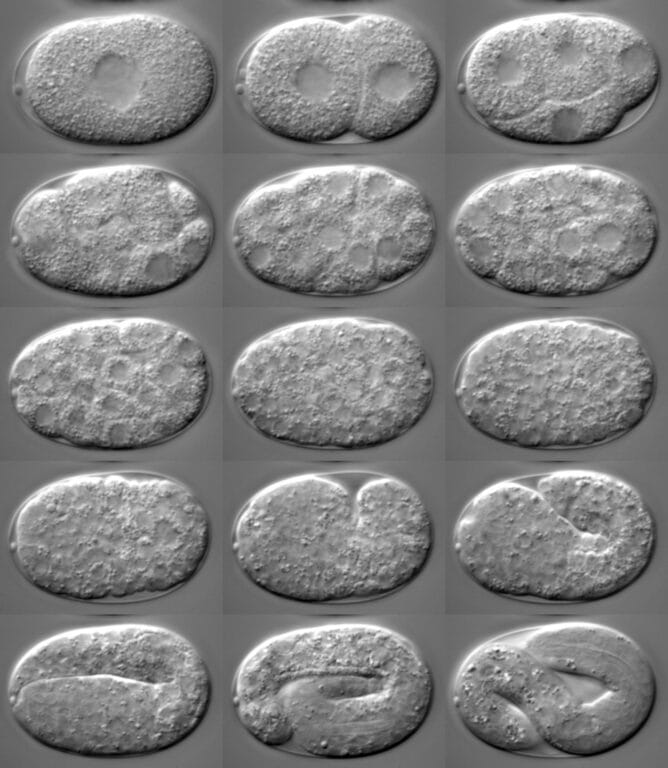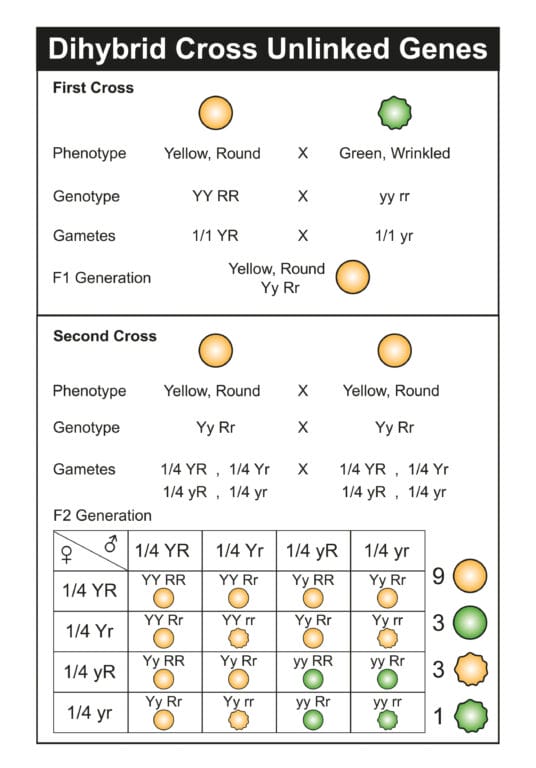What is inheritance?
Developing mouse embryo days 1-4. Image credit: Dr M. Zernicka-Goetz, Gurdon Institute / via Wellcome Collection

Inheritance is the way that genetic information is passed from a parent to a child.
- Members of the same biological family tend to have similar characteristics – including physical appearance and the likelihood of developing certain genetic conditions.
- Inheritance describes the way these traits are passed down between generations, with genetic information passed from a parent to a child.
The definition of inheritance
- As humans, we have two sets of 23 chromosomes in most of our cells. We inherit one set from each of our biological parents.
- The combination of inherited genetic information contributes to an individual’s characteristics. It’s why members of a biological family often share similar appearance – such as height, hair colour, and even nose and ear shape.
- Variations in the genetic information can also cause genetic conditions, which can increase the risk of passing a condition between generations.
- For example, arthritis, Huntington's disease and some types of cancer are all conditions that can run in families.
Genotypes and phenotypes
- The genotype is the unique genetic makeup of an organism, from their entire genome down to individual variants – or alleles – of specific genes.
- The phenotype is an organism’s physical characteristics. Most phenotypes are influenced by the genotype, but environmental factors can also play a role.
- For example, height: the genotype is a combination of more than 700 different genes. The phenotype is a person’s height, which is influenced by these genes and environmental factors – like nutrition during childhood.
How is genetic material inherited?
- Most of our cells contain two sets of 23 chromosomes. This is known as being diploid.
- The exceptions are the egg and the sperm. They only have one set of chromosomes each, known as being haploid.
- During sexual reproduction, the sperm cell combines with the egg cell to form a fertilised egg – the first cell of the new organism.
- The fertilised egg now has two sets of 23 chromosomes, with one set inherited from each biological parent. It has the complete set of instructions needed to make more cells and eventually develop into a person.

How are sex traits determined?
- A person’s sex traits – such as their genitalia, hormones, reproductive organs – are determined by the sex chromosomes.
- The sex chromosomes are called the X chromosome and the Y chromosome.
- The egg usually always carries an X chromosome. The sperm usually carries either an X or a Y chromosome.
- When an egg joins with a sperm containing an X chromosome, the child has an XX genotype and is usually assigned female at birth.
- When an egg joins with a sperm containing an Y chromosome, the child has an XY genotype and is usually assigned male at birth.
- Though rare, other combinations of sex chromosomes – such as XXY – are possible. These are known as intersex combinations. At birth, these children are usually assigned the gender that most closely matches their external genitalia.
Our first understanding of inheritance: Mendelian genetics in 1865
- The simplest way that genetic characteristics are passed between generations is through Mendelian genetics – discovered by Gregor Mendel in 1865.
- He investigated two simple traits in the common pea plant: the colour of the peas (yellow or green), and the texture of the peas (smooth or wrinkly).
- In one experiment, he cross-fertilised a plant that had smooth, yellow peas with a plant that had wrinkly, green peas:
- In the first generation (F1), every pea plant was smooth and yellow.
- When two smooth, yellow F1 peas were crossed, the result in the second generation was 75% smooth and yellow, and 25% wrinkly and green.
- This means that the genes that code for smooth, yellow peas are dominant, while the genes that code for wrinkly, green peas are recessive (see image below).

From his pea plant experiments, Mendel came up with three principles of inheritance:
- Each trait is determined by a ‘factor’ that is passed onto descendants. We now know these factors are genes.
- Individuals inherit one ‘factor’ (or gene) from each parent for each trait.
- A trait might not show up in an individual – but it can still be passed onto the next generation.
Genetic characteristics that follow Mendel’s principles are called Mendelian.
- We now know that many of our traits are controlled by multiple genes and other factors in a more complex way than this simple inheritance model.
- However, some genetic conditions are influenced by single genes and can be passed between generations using Mendelian principles.
- For example, cystic fibrosis is a recessive condition caused by a mutation in the CFTR gene.